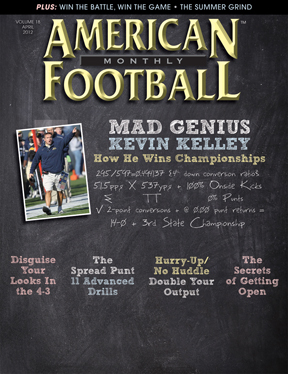Article CategoriesAFM Magazine
|
Dynamic Relaxation, Rhythm, Intensity Ė Learned from Drill Applicationsby: Dale BaskettFootball Speed Specialist © More from this issue There are three main components for sprint speed Ė relaxation, rhythm, and intensity. Connotations of the first two components Ė relaxation and rhythm Ė donít sound like normal football terms when you think of the mental mind set. Relaxation is an uncompromising term in the football world. When players walk on to a football field they donít think of relaxing. They donít even begin to think that itís a good idea. Rhythm is a term that you hear sometimes in football. Itís usually referred to as something happening involuntarily, not always a practiced trait. For example, the flow of the game can have a rhythm. It can be what happens to a team or player, such as a QB. These three elements have a significant place in football when we speak of football speed and the proper training. Running is the essence of the game. Ho....The full article can only be seen by subscribers.
|
|
|||||||
| HOME |
MAGAZINE |
SUBSCRIBE | ONLINE COLUMNISTS | COACHING VIDEOS |
Copyright 2025, AmericanFootballMonthly.com
All Rights Reserved





